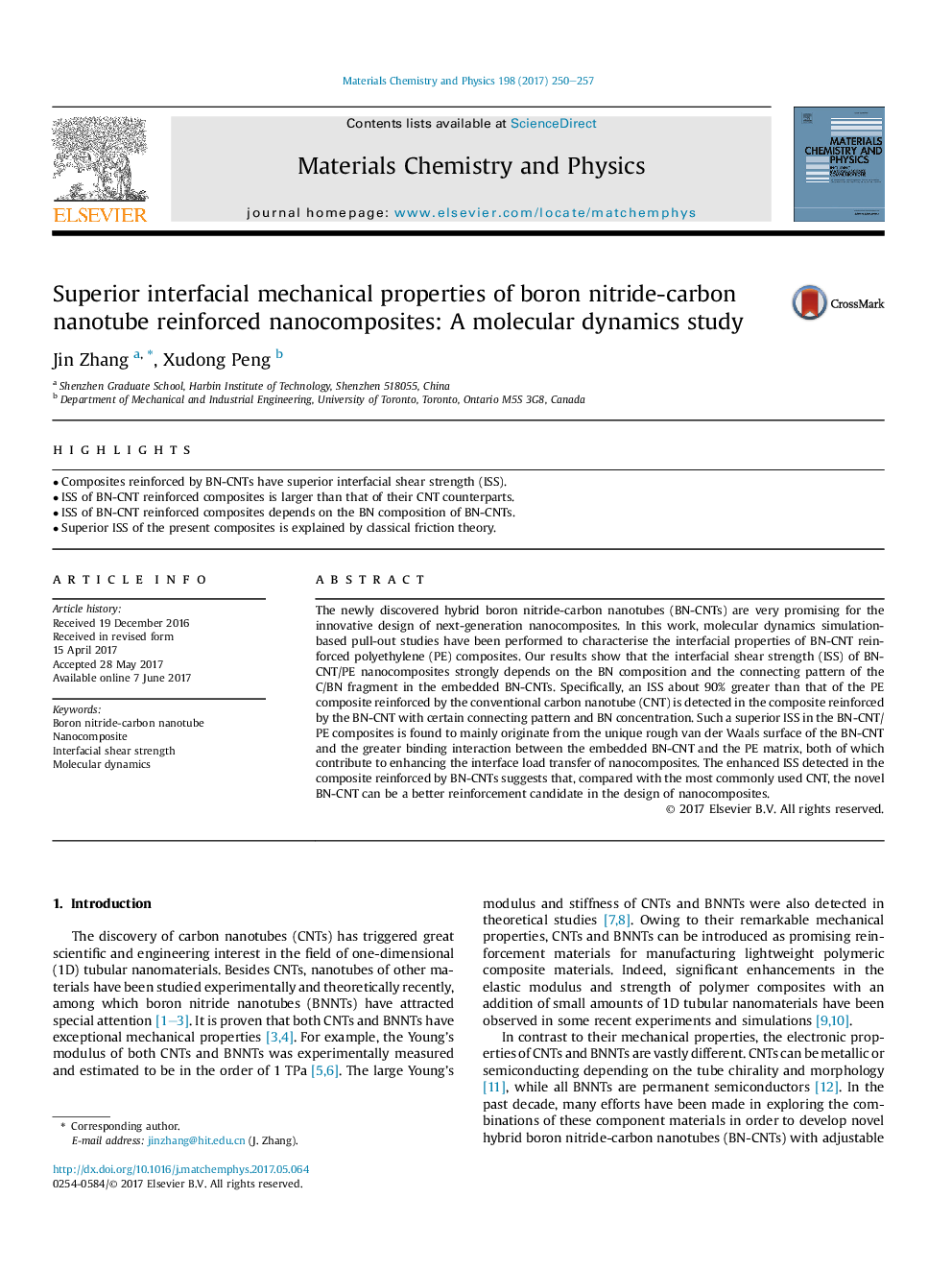| Article ID | Journal | Published Year | Pages | File Type |
|---|---|---|---|---|
| 5447829 | Materials Chemistry and Physics | 2017 | 8 Pages |
Abstract
The newly discovered hybrid boron nitride-carbon nanotubes (BN-CNTs) are very promising for the innovative design of next-generation nanocomposites. In this work, molecular dynamics simulation-based pull-out studies have been performed to characterise the interfacial properties of BN-CNT reinforced polyethylene (PE) composites. Our results show that the interfacial shear strength (ISS) of BN-CNT/PE nanocomposites strongly depends on the BN composition and the connecting pattern of the C/BN fragment in the embedded BN-CNTs. Specifically, an ISS about 90% greater than that of the PE composite reinforced by the conventional carbon nanotube (CNT) is detected in the composite reinforced by the BN-CNT with certain connecting pattern and BN concentration. Such a superior ISS in the BN-CNT/PE composites is found to mainly originate from the unique rough van der Waals surface of the BN-CNT and the greater binding interaction between the embedded BN-CNT and the PE matrix, both of which contribute to enhancing the interface load transfer of nanocomposites. The enhanced ISS detected in the composite reinforced by BN-CNTs suggests that, compared with the most commonly used CNT, the novel BN-CNT can be a better reinforcement candidate in the design of nanocomposites.
Related Topics
Physical Sciences and Engineering
Materials Science
Electronic, Optical and Magnetic Materials
Authors
Jin Zhang, Xudong Peng,
